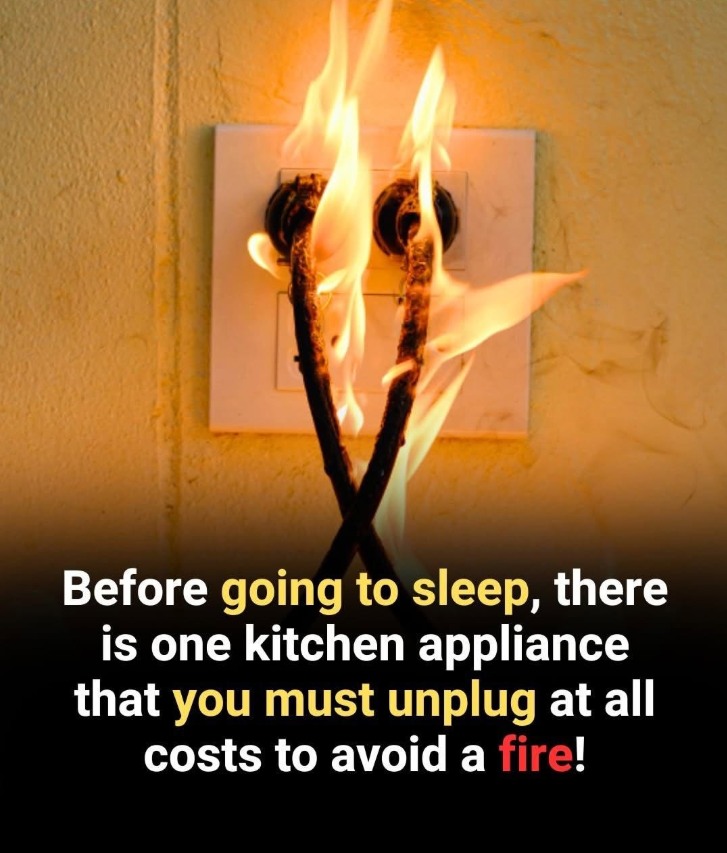Most people assume that once an appliance is turned off, it stops consuming electricity. Unfortunately, that misconception costs households hundreds of dollars each year—and it also exposes them to unnecessary fire hazards. Hidden in plain sight, so-called “energy vampires” quietly siphon power from our homes, even when no one is actively using them. These devices continue to draw electricity in standby mode, and while a few watts here and there may seem negligible, the cumulative effect is staggering.
Energy experts estimate that the average home loses between $100 and $200 annually to appliances that remain plugged in but idle. That translates to over 1,200 kilowatt-hours of wasted energy—enough to power a refrigerator for nearly an entire year. Beyond the financial loss, these idle devices contribute hundreds of pounds of unnecessary carbon emissions, further straining the environment. More concerningly, they increase the risk of overheating, electrical shorts, and even house fires.
Consider something as simple as a phone charger. A single charger left plugged in 24/7 wastes roughly $9 worth of electricity per year, even without a device connected. That may seem minor, but multiply it by several chargers—one for each family member, plus extras scattered around the home—and that total quickly rises to $40 or $50 annually. It’s these small, invisible drains that often explain unexpectedly high utility bills.
Then there are the larger culprits. Coffee makers, for instance, may appear harmless sitting on the counter, yet many models continue to draw power to maintain clocks or keep warmers running. Left plugged in, a coffee maker can waste as much as $22 per year. Gaming consoles are even more energy-hungry. When kept in “standby” mode to download updates or remain ready for instant play, they can consume over $100 of electricity annually—sometimes exceeding the console’s own cost over several years.
Desktops, printers, and modems add to the waste. Even when turned off, many computers continue drawing power to maintain LED lights or standby circuits. Printers and routers often stay in low-energy mode around the clock, adding $50 to $80 to annual electricity costs. Similarly, kitchen appliances like slow cookers, toaster ovens, and Instant Pots may quietly draw $25 or more if left plugged in year-round.
Add it all together, and the average home wastes at least $147 per year, with some households surpassing $200. That’s money that could pay for a weekend trip, a new appliance, or several months’ groceries—gone simply because appliances weren’t unplugged.
The risks extend beyond financial loss. Fire investigators frequently warn that leaving chargers, small electronics, and appliances plugged in when not in use is dangerous. Overheated adapters, dusty computers, or aging kitchen equipment have all been linked to electrical fires. Often these fires start small but spread quickly, frequently while homeowners are asleep or away. A few seconds of convenience—leaving a device plugged in “just in case”—can lead to catastrophic consequences.
Thankfully, the solution is simple. Unplugging devices when they aren’t in use immediately stops the unnecessary energy drain. For households where constant unplugging feels inconvenient, smart power strips offer an elegant solution. These strips detect idle devices and cut power automatically, preventing phantom energy consumption without requiring continual unplugging. They are inexpensive, easy to install, and typically pay for themselves within a year through energy savings.
Another effective strategy is to group devices by usage. For example, connecting a TV, gaming console, and sound system to one strip makes it easy to turn them all off after family movie night. Likewise, kitchen appliances that aren’t used daily—blenders, toasters, or air fryers—can remain unplugged until needed.
When adopted across millions of homes, these small changes can have a significant impact. They reduce household bills, decrease overall energy demand, and lessen strain on the power grid. Every home that practices regular unplugging prevents hundreds of pounds of carbon dioxide from entering the atmosphere each year.
There’s also a psychological benefit. Knowing your home is free from unnecessary power drains—and safer from fire hazards—brings peace of mind. It’s a simple, proactive way to take control of your space, your safety, and your finances.
Ultimately, unplugging appliances isn’t about sacrifice—it’s about making smarter use of what you already have. Every household has energy vampires lurking in plain sight, from the glowing red dot on a DVD player to the quiet hum of a router. Identifying and unplugging them is one of the easiest and most cost-effective steps anyone can take to protect both their wallet and their home.
So the next time you pass an idle charger or a coffee maker untouched all day, remember: every little watt counts. Pull the plug, save money, and rest easy knowing you’ve stopped one more vampire from feeding on your home.
